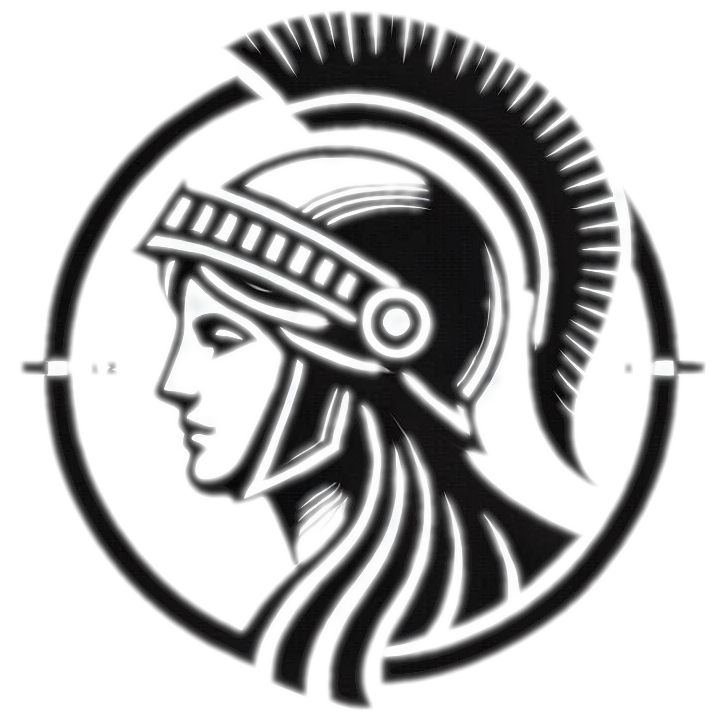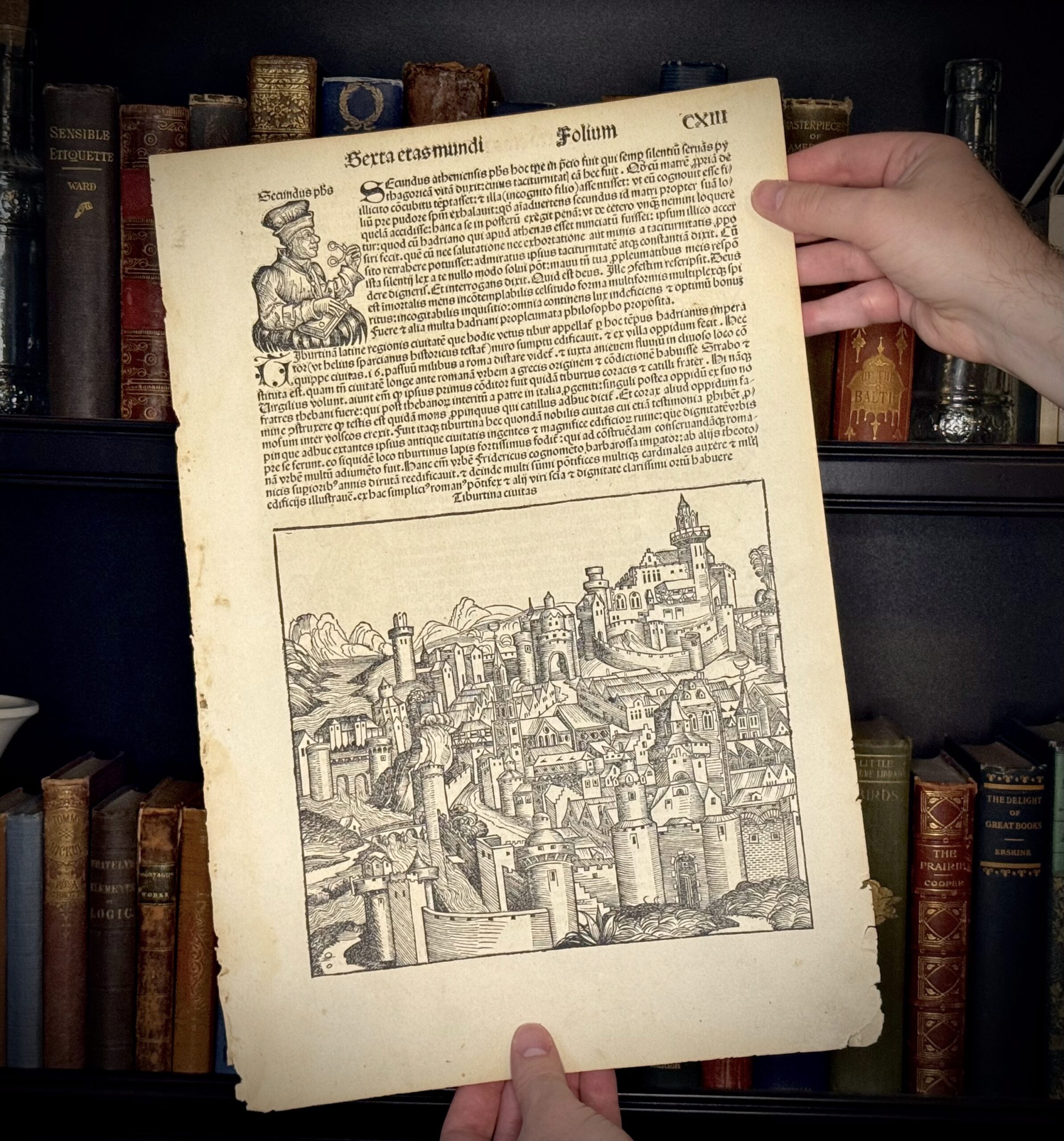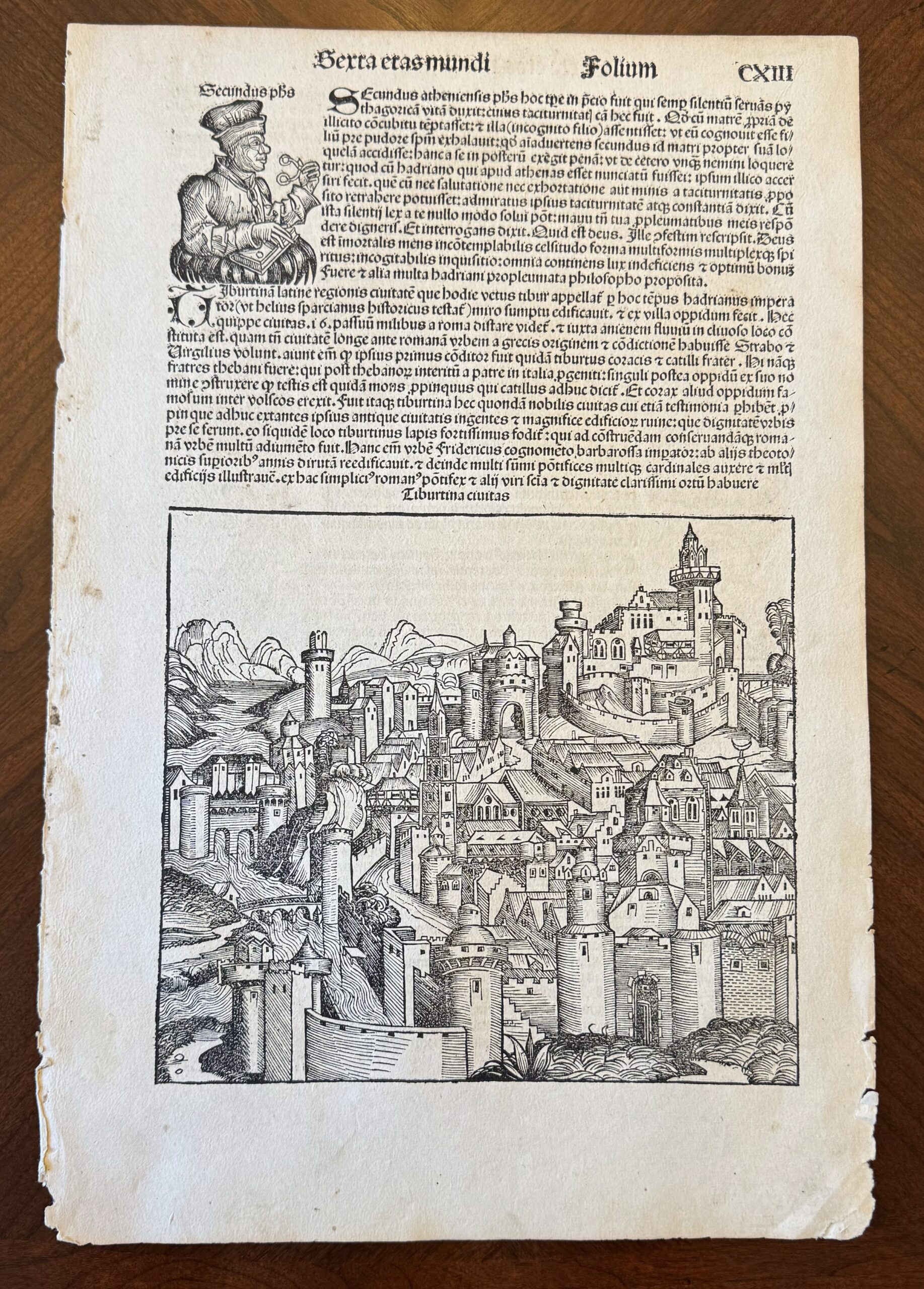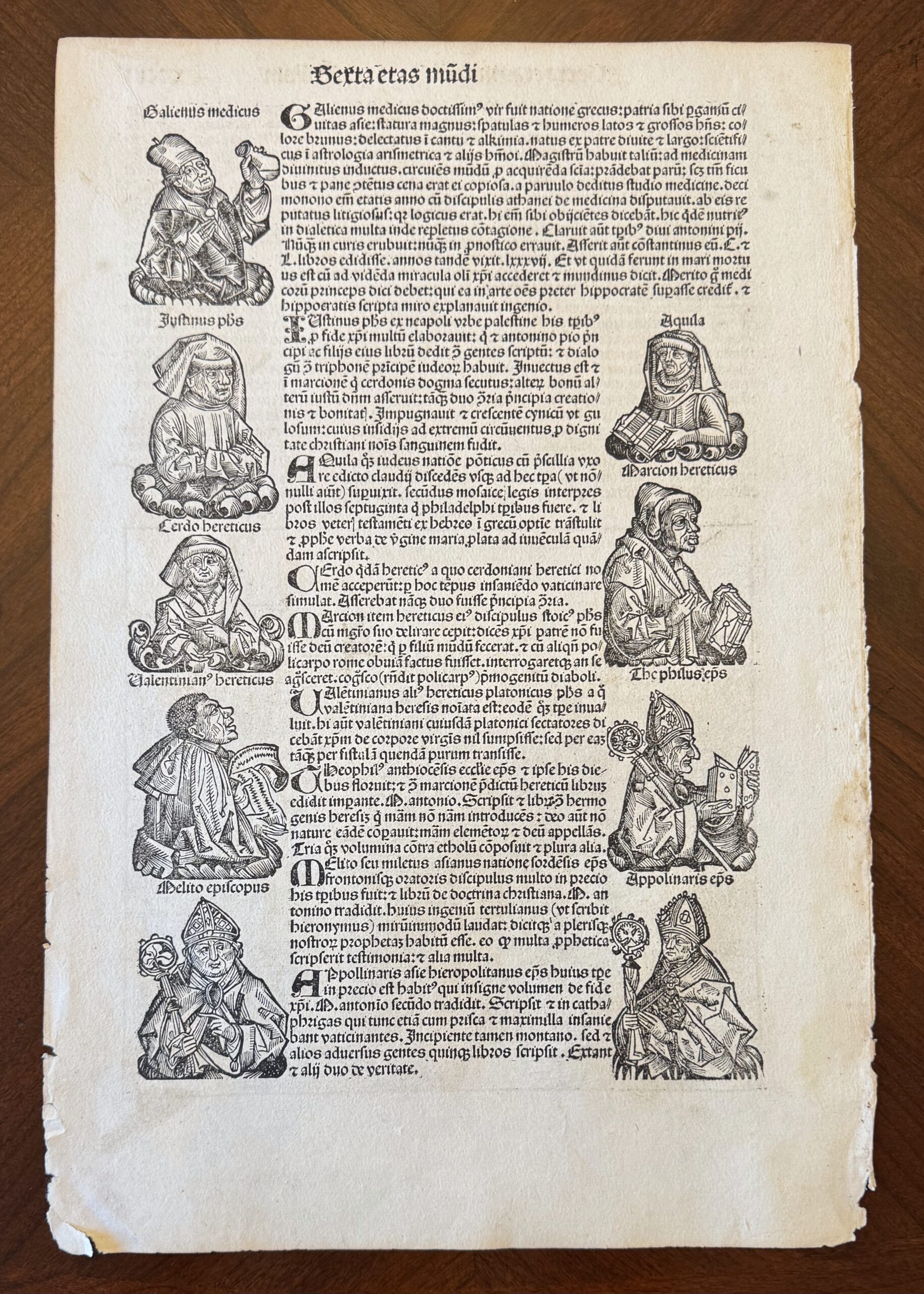- Title: Nuremberg Chronicle – Leaf 113
- Author: Hartmann Schedel
- Printed and published by Anton Koeberger
- Estimated year of printing: 1493
Notes:
The oldest item in my collection, this is a single leaf from Liber Chronicarum, also known as the Nuremberg Chronicle. This first Latin edition was published in mid-1493, with a German version following in late 1493. The first printed book in Europe, the Gutenberg Bible, appeared in 1450, and printed material from the first 50 years of the history of printing, such as this, is referred to incunabulum.
The Nuremberg Chronicle was effectively the world’s first encyclopedia — it documented the history of the world up to that point (as it was understood in the 1400s), and also documented many notable cities and people, all through a Biblical context. The author, Hartmann Schedel (1440 – 1514), was a medical doctor and avid book collector. He used passages from classical and medieval works in his collection when composing the text for the Chronicle.
It was a significant technical achievement for the time, being one of the first books to blend text with images. Michael Wolgemut provided the 1,809 woodcut illustrations, including many depicting never-before-illustrated major cities in Europe and the Near East. As with other books of the period, many of the woodcuts, showing towns, battles or kings were used more than once in the book, with just the text labels changed.
The front side of this leaf is about the Athenian philosopher Secundus who led a silent life, as well as the Italian city of Tiburtina, now known as Tivoli. The reverse side has pictures and brief biographies of many people, including physicians, philosophers, bishops, and heretics.
Historical context:
This book was published during a period of intense discovery and exploration. During the 1490s Leonardo da Vinci was alive and active, discovering capillary action, developing oil lamps, designing helicopters, and painting The Last Supper. He wouldn’t paint the Mona Lisa until 1516. Christopher Columbus first sailed across the Atlantic to the New World in 1492. He returns to Europe in 1493, the same year that Pope Alexander VI decrees that all land discovered in the New World belongs to Spain.



